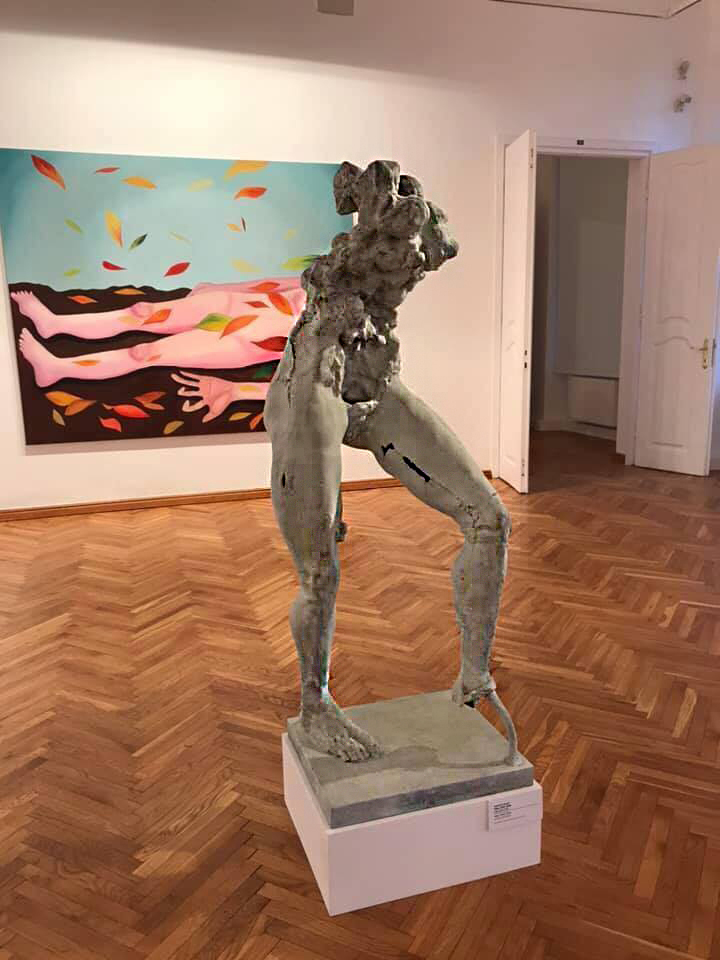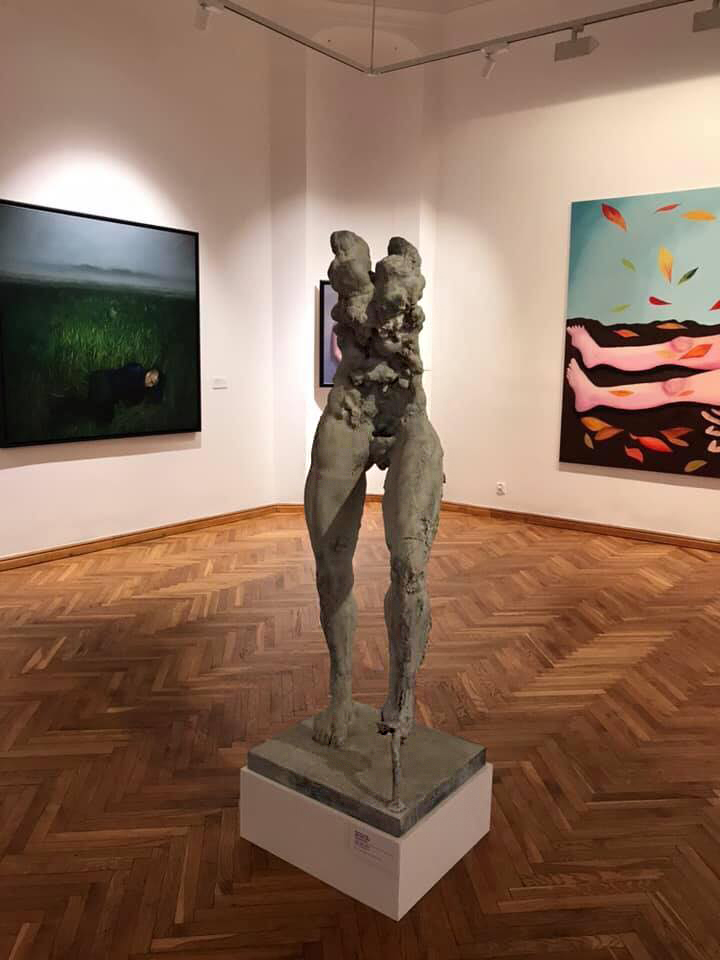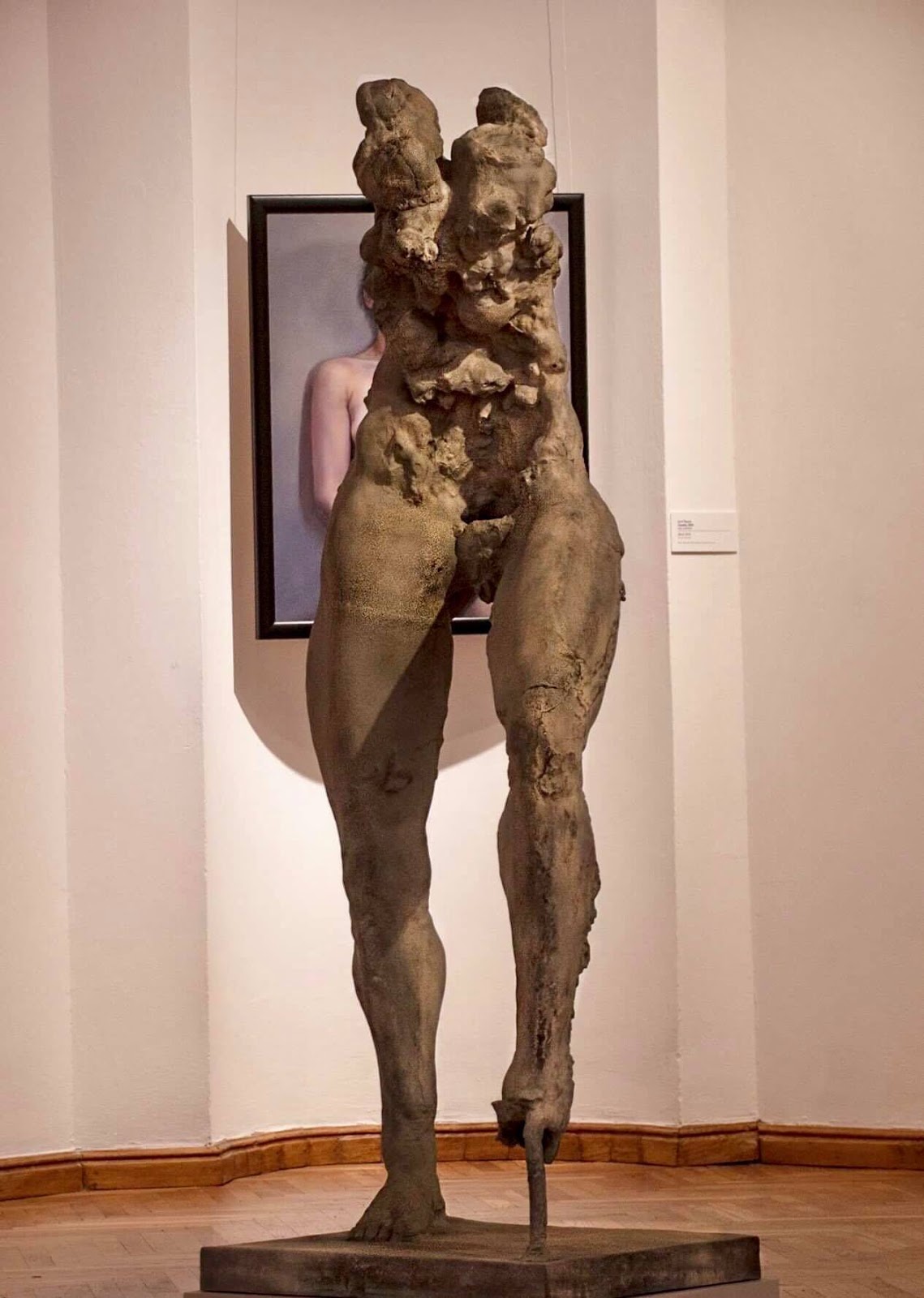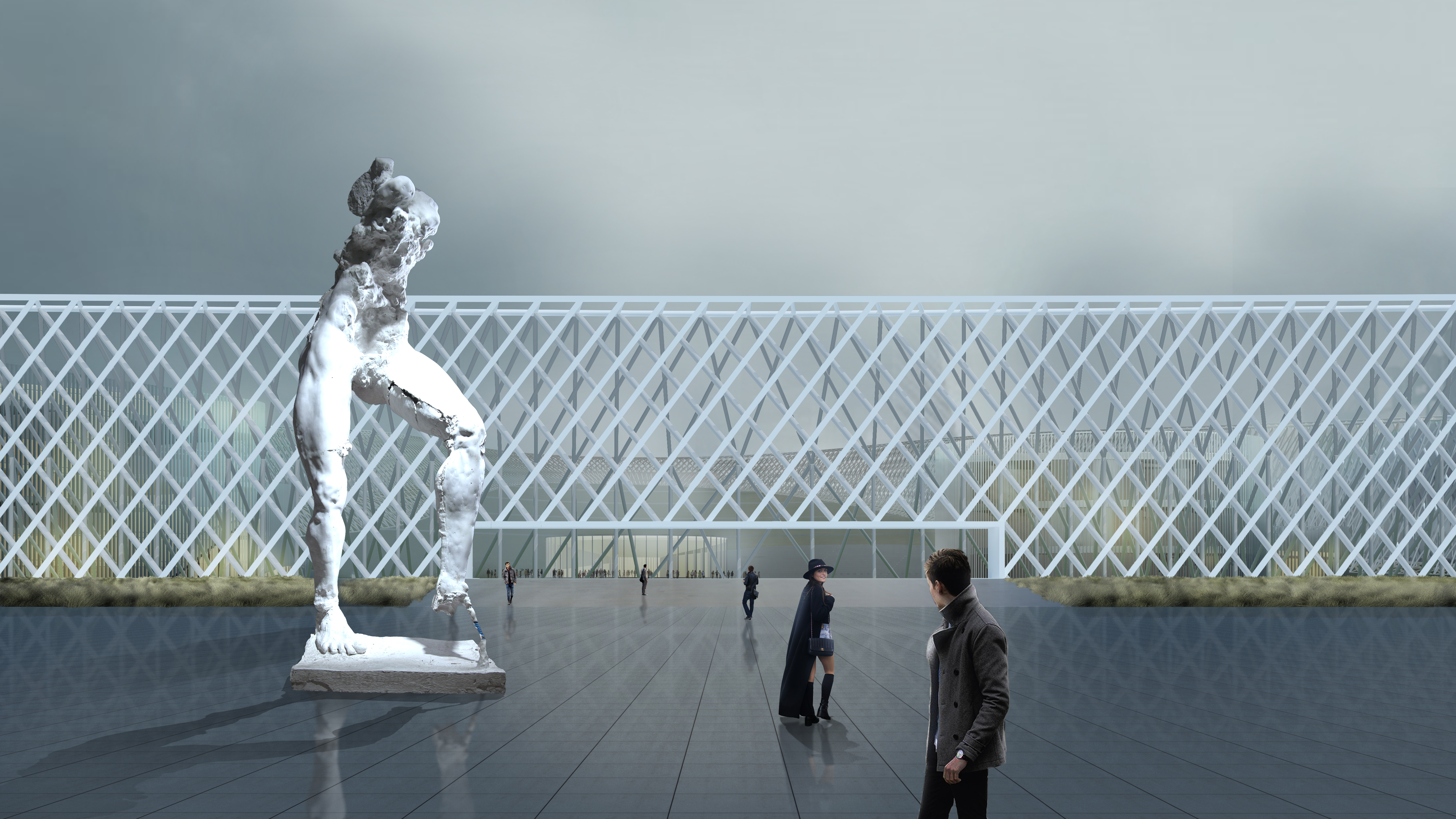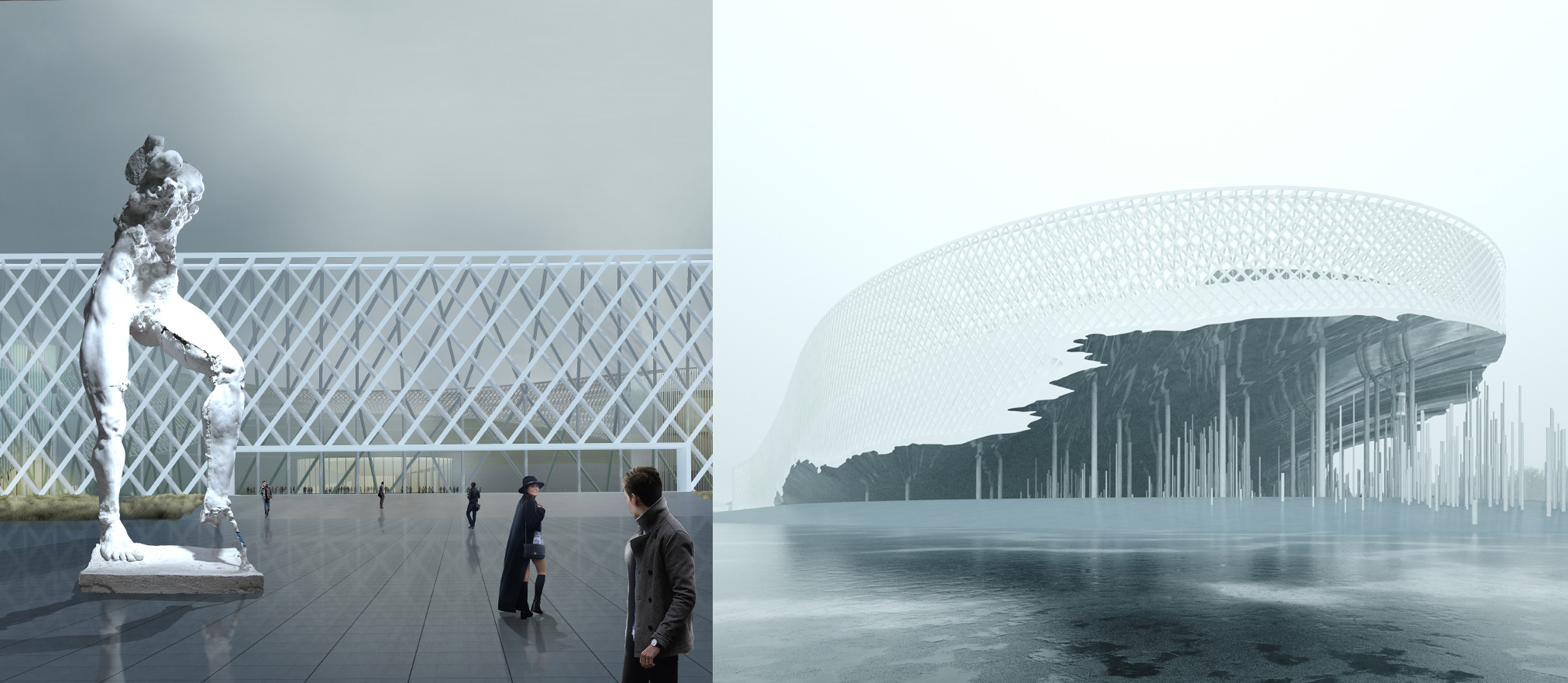Nike
160x81x53cm, 63x32x21 inch (human size height ) Material: bronze, Edition: 2/4
NIKE – a goddess of war and a personification of victory in Greek mythology. She belonged to the first generation of gods older than the Olympians. She is a daughter of theTitan Pallas and the goddess of the subterranean river Styx. In war she was accompanied by her siblings Zelus (Zeal), Kratos (Strength) and Bia (Force). I consider my work on the piece to be a creative modelling of my inner state of reality and accordingly a possibility of diverse approaches to the process of creation itself. In this way it pursues a visual thesis of the liquidity of everything. This mental and semantic space includes manifestations different from the ones adapted so far; these manifestations are most often embedded in a difficult and sometimes uncomfortable discourse on transgenic phenomena as opposed to widely accepted normalcy. Utopia meets anti-utopia, and consequently one transforms itself into the other. However, everything takes place in areas different from the real ones. A total art of multidimensional mental illusion is a tool for modelling the image through mind. It touches upon the questions posed in the neurohistory of art about a connection between visualization and feeling on the one hand and brain physiology, mainly eyesight, on the other. It appears to be a breakthrough in the evolution of our species, which opens an opportunity to the expansion of biological possibilities but also raises doubts and anxiety as to what forms the unpredictable changes will take. A movement away from the previous state might be irreversible. Human beings will be a different species. Are we not entering the dark sphere of mythology brimming with immortal monsters, fighting whom requires superhuman heroism and abandoning ethical constraints? Victory belongs to awareness. The ever increasing pressure of transformation provokes a need for defusing and reinvigorating catharsis. The factors constructing the hypertrophy of this tension are elements such as the utopia of virtual paradise, glitz aesthetics, anti-aesthetics, the perverse pursuit of exaggerated expression and overblown emotionality. They include the atrophy of human higher feelings and the disintegration of the old world together with the exhaustion of paradigms of big narratives, including truth, good and beauty. These might be replaced by simulacra, empty signs of tautology and misidentification, without any source or address. We are faced with a dilemma of referring to reality (Baudrillard’s hyperreality) through an artistic programme that might be the world of hermetic, decadent and autothematic impressionisticaesthetic sublimations or modelling of the conditions of the entire environment. Piotr Głowacki, curator, historian
